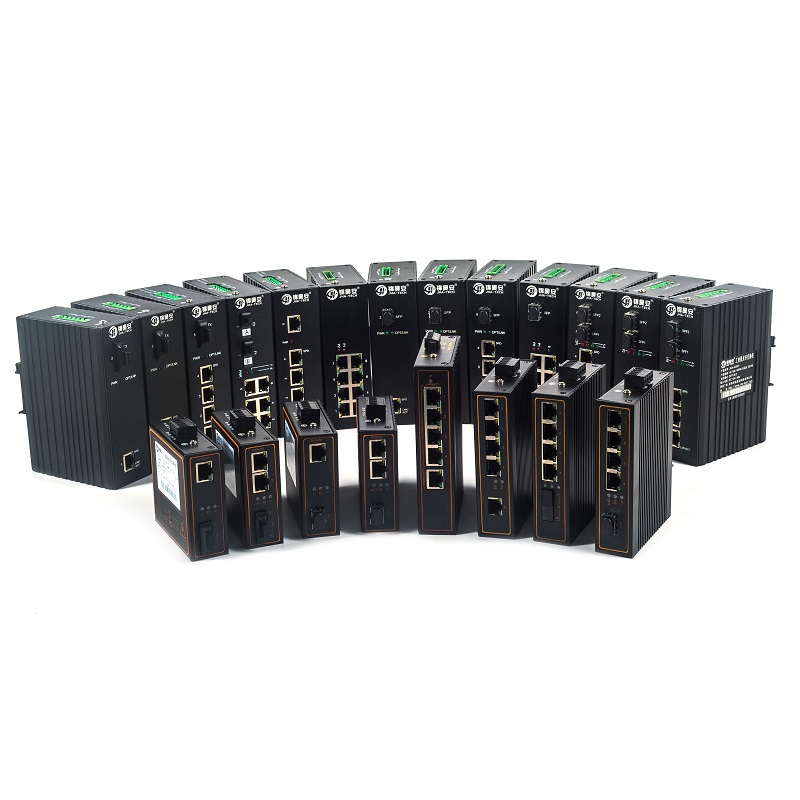The use of Ethernet on factory floors and in industrial applications to access and remotely monitor data is rapidly growing. As Ethernet reaches the factory floor, choosing the right infrastructure—including the right switch for the right application—is imperative to maximize the performance of an entire system. At the highest level, this decision begins with the selection of managed and unmanaged Ethernet switches. In this article, we’ll compare unmanaged switches to managed switches from different aspects, and suggest when and where to use each type of switch.
The Differences Between Managed and Unmanaged Network Switches
Basically, an unmanaged switch allows you to immediately plug-and-play devices into your network, while a managed switch allows for greater control over it. However, the differences go deeper, so it’s time to look at the features, performance, security and cost of each.
Features
An unmanaged switch is simple, connecting Ethernet devices with a fixed configuration that you cannot make any changes to, often used for small networks or to add temporary groups of systems to a larger network. A managed switch, on the other hand, also allows you to manage, configure, and monitor the settings of your LAN, including controls over LAN traffic, prioritizing certain channels, and create new virtual LANs to keep smaller groups of devices segregated and to better manage their traffic. Managed switches also offer redundancy features that duplicate and recovery data in the event of a device or network failure.
Performance
The advantage to unmanaged switches when it comes to performance is that you can plug and play immediately with your network. There’s no need to set anything up, and it has in-built QoS services to ensure its working well. With a managed switch, however, you can prioritize channels at will, ensuring that you get the best performance where you need it. Furthermore, features like Priority SNMP, which allow for remote troubleshooting of the network, also make it even easier to check for any issues impacting that performance, allowing you to implement fixes if necessary.
Security
Unmanaged switches, on the whole, have very basic security. They’re secured by ensuring you have no vulnerabilities from system to system, which accessories like a lockable port cover can ensure no-one is tampering with the device directly. Managed switches have some major security benefits, such as the ability to monitor and control the network to shut down active threats, protection for data, control, and management plan. The security features differ from different managed switchers, from network communication encryption, access control lists that keep out unauthorized users, and VLANs can also be used to create temporary or limited access to your network for those that normally shouldn’t have access. It is, however, worth noting that managed switches offer a lot of control over your network that could, potentially, be a threat. As such, they should be monitored and controlled with only a network technician having the highest level of access privileges. In our changing digital landscape, cyber security has become paramount importance of 2020.
Cost
When it comes to the cost, the comparison is relatively simple. The price of managed switches are significantly higher than unmanaged switches, the price of unmanaged switches usually depends on how many ports you need the switch to have. While the price of managed switches is more affected by the different features, such as security and access controls that you’re paying for in addition to the switch’s configuration abilities.
When and where to use?
All of the features of managed switches do come at additional costs, so it is important to know when to select a hardened managed switch or when an unmanaged switch can be used. Unmanaged switches are mostly used to connect edge devices on network spurs, or on a small stand-alone network with only a few components. Managed switches should be used on any network backbone switch so that segments of network traffic can be monitored and controlled. Additionally, any device that would be considered critical to your network should be connected via a managed switch so its health can be monitored and secured and so redundancy can be implemented to increase uptime and reliability. Finally, switches being implemented in an Ethernet IP network should be managed, because Ethernet IP extensively uses multicast traffic that can overwhelm networks if it is not managed properly.
Post time: Jun-09-2020






